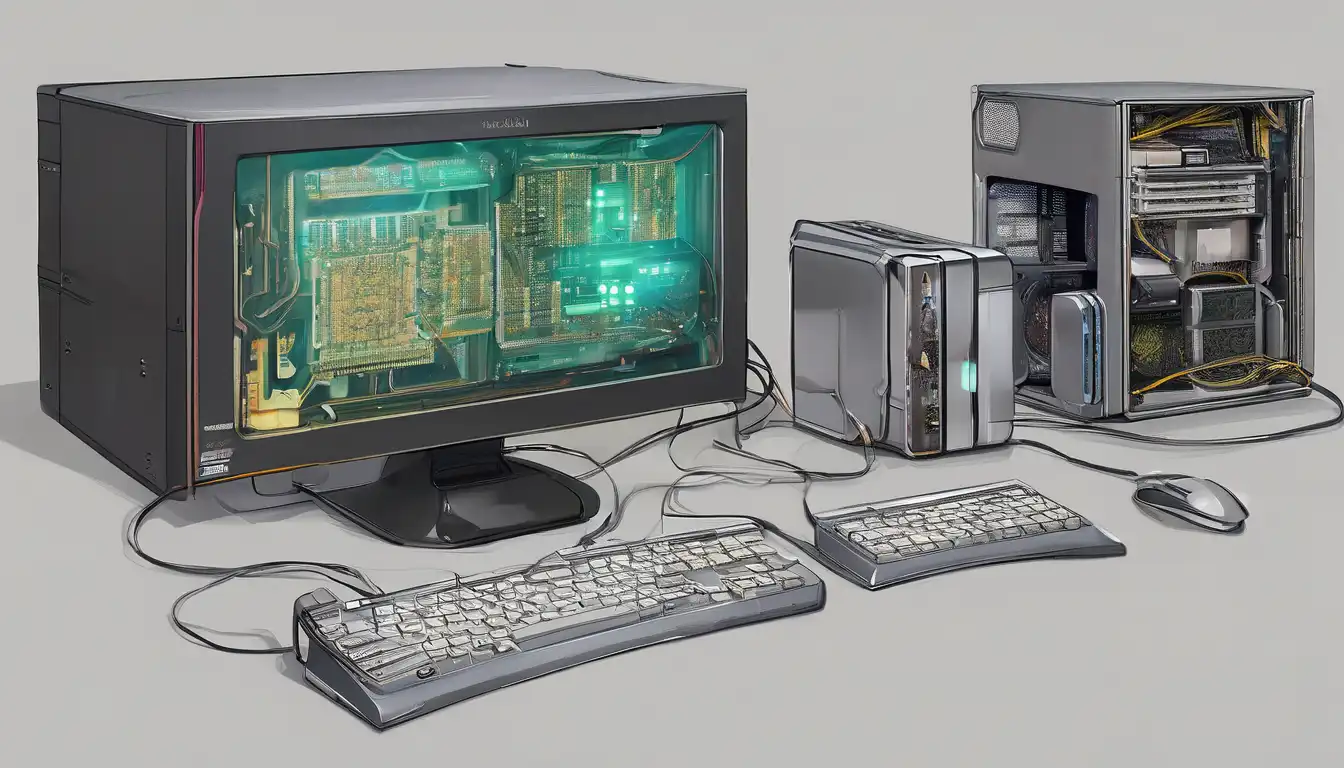Revolutionary Advances in Computer Hardware Technology
The landscape of computer hardware technology is undergoing unprecedented transformation, with innovations emerging at an accelerated pace. From quantum computing breakthroughs to AI-optimized processors, the latest developments are reshaping how we interact with technology. These advancements not only enhance performance but also redefine the boundaries of what's possible in computing.
Next-Generation Processors and Architecture
The processor market has witnessed remarkable evolution with chip manufacturers pushing the limits of Moore's Law. Modern CPUs now feature advanced architectures that prioritize both performance and energy efficiency. The integration of AI acceleration directly into processor cores represents one of the most significant innovations, enabling real-time machine learning capabilities without external hardware.
Multi-core technology has evolved beyond simple core count increases. Today's processors employ heterogeneous computing architectures where different cores specialize in specific tasks. This approach optimizes power consumption while maintaining peak performance for demanding applications. The latest chips also feature improved thermal management systems that allow sustained high-performance operation without thermal throttling.
Graphics Processing Unit Revolution
Graphics cards have transcended their traditional gaming and rendering roles to become essential components for AI development, scientific computing, and content creation. The latest GPU innovations include real-time ray tracing capabilities that deliver photorealistic graphics and advanced tensor cores optimized for deep learning applications. These developments have made high-performance computing more accessible to professionals across various industries.
Memory technology in GPUs has also seen substantial improvements with GDDR6X and HBM2e implementations offering unprecedented bandwidth. This enhanced memory architecture enables smoother 8K video editing, complex 3D rendering, and sophisticated AI model training. The integration of hardware-accelerated ray tracing and AI upscaling technologies represents a paradigm shift in visual computing.
Storage Technology Breakthroughs
Solid-state drive technology continues to evolve at an impressive rate, with PCIe 4.0 and emerging PCIe 5.0 interfaces delivering transfer speeds previously unimaginable. The latest NVMe SSDs offer read/write speeds exceeding 7,000 MB/s, effectively eliminating storage bottlenecks in high-performance systems. These advancements have revolutionized data access times and system responsiveness.
3D NAND technology has matured significantly, allowing for higher storage densities while maintaining reliability. The development of QLC (Quad-Level Cell) and PLC (Penta-Level Cell) NAND flash has made high-capacity SSDs more affordable, accelerating the transition from traditional hard drives. Enterprise storage solutions now feature advanced error correction and wear-leveling algorithms that ensure data integrity even under heavy workloads.
Memory and RAM Innovations
DDR5 memory technology represents a substantial leap forward in system memory performance. With data rates starting at 4800 MT/s and scaling beyond 8400 MT/s, DDR5 delivers nearly double the bandwidth of previous generations while operating at lower voltages. The architecture includes onboard power management and error correction features that enhance stability and efficiency.
The integration of HBM (High Bandwidth Memory) in high-performance computing applications continues to push boundaries. This stacked memory technology provides exceptional bandwidth crucial for AI training, scientific simulations, and advanced graphics processing. The latest HBM3 specifications promise even greater performance improvements for data-intensive applications.
Cooling and Thermal Management
Advanced cooling solutions have become essential as component power densities increase. Liquid cooling systems have evolved from exotic enthusiast options to mainstream solutions, with all-in-one coolers offering efficient thermal management for high-performance processors. Phase-change cooling and vapor chamber technologies provide even more effective heat dissipation for extreme overclocking scenarios.
Innovative materials like graphene-based thermal compounds and diamond-nanotube composites are revolutionizing thermal interface technology. These materials offer superior heat conductivity while maintaining long-term stability. Active cooling systems now incorporate intelligent fan control algorithms that optimize noise levels while ensuring adequate cooling under varying load conditions.
Connectivity and I/O Advancements
The latest hardware innovations extend to connectivity standards, with USB4 and Thunderbolt 4 providing universal high-speed data transfer and display capabilities. These technologies support data rates up to 40 Gbps while delivering power delivery and video output through a single cable. The standardization of these interfaces simplifies device connectivity and enhances user experience.
Wi-Fi 6E and emerging Wi-Fi 7 technologies are transforming wireless connectivity, offering reduced latency and increased bandwidth for modern computing needs. The addition of the 6 GHz spectrum provides cleaner wireless channels, essential for high-density environments and latency-sensitive applications like VR gaming and real-time collaboration.
Power Supply Innovations
Modern power supply units have evolved to meet the increasing power demands of high-performance components while maintaining efficiency. The latest ATX 3.0 standard introduces native support for PCIe 5.0 graphics cards and improved transient response capabilities. These power supplies feature enhanced digital monitoring and control systems that optimize power delivery based on system requirements.
Efficiency ratings have improved significantly, with 80 Plus Titanium certified units achieving up to 94% efficiency under typical loads. Modular cable designs and compact form factors make system building more accessible while improving airflow and cable management. Advanced protection circuits ensure component safety even under challenging operating conditions.
Future Trends and Emerging Technologies
The hardware innovation landscape continues to evolve with several promising technologies on the horizon. Quantum computing developments, though still in early stages, show potential for solving complex problems beyond classical computing capabilities. Neuromorphic computing architectures, inspired by biological neural networks, offer alternative approaches to traditional von Neumann architectures.
Photonic computing and memristor technology represent additional frontiers in hardware innovation. These technologies could eventually lead to systems that process information using light or mimic human brain functionality. As these technologies mature, they may redefine the fundamental principles of computer architecture and performance.
The rapid pace of innovation in computer hardware technology ensures that users will continue to benefit from improved performance, efficiency, and capabilities. Staying informed about these developments helps consumers and professionals make educated decisions when upgrading or purchasing new systems. The future of computing hardware promises even more exciting breakthroughs that will continue to transform how we work, create, and interact with technology.
